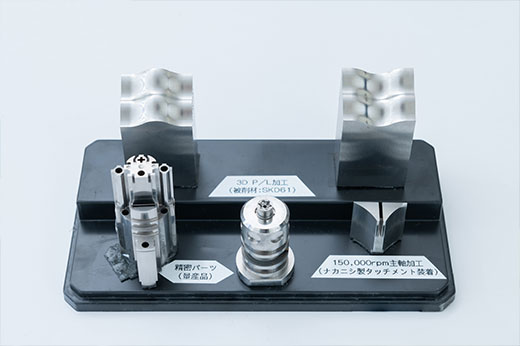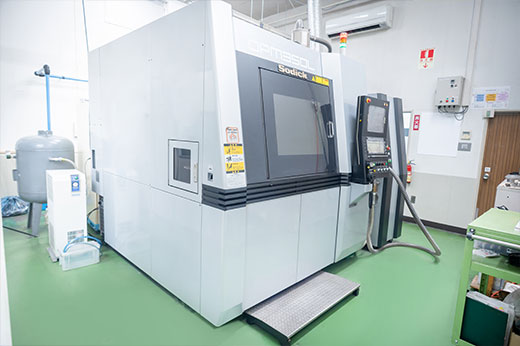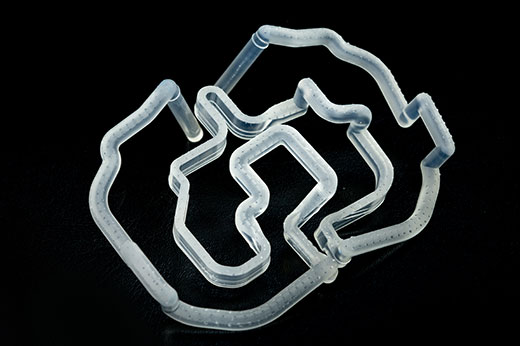- HOME
- Mold design

Complex and irregular mold shapes are no problem!
Sanko Kasei utilizes 3D CAD, CAM and CAE solutions to produce mold designs tailored to client requirements.
3D CAD can be used to determine the optimum location of parting lines and nesting on even the most complex and irregular shapes. This has the advantage of significantly reducing production lead times.
Similarly, mold flow analysis is used at the early design stage to identify potential issues with resin behavior during filling as well as potential defects such as post-mold warping and deformation.
With 3D CAD, we can confidently make predictions about mold filling issues and production defects at the early mold design stage, and then modify and improve the mold specifications accordingly.
Mold making on metal 3D printers

3D printers are starting to appear in a range of different fields. At Sanko Kasei, we use 3D printers to produce metal molds for manufacturing plastic products. It is no exaggeration to say that this new technology is poised to completely revolutionize conventional approaches to mold making.
Having been attuned to the potential benefits of 3D printing from the outset, Sanko Kasei has already installed both plastic and metal 3D printers. In fact, we are one of only a few manufacturers in Japan to be operating two different types of 3D printers.
Currently we are trialing the use of 3D printed metal mold components as part of our ethos of actively embracing new technology in order to drive quality improvements and tailor our design and production systems more closely to the needs and expectations of the market.
Additive Manufacturing (AM) with the Sodick OPM305L metal 3D printer
The fully automated OPM350L metal 3D printer boasts 99.9% melting efficiency.
First, a quantity of metal powder is melted and solidified via ten passes of a laser beam. The solid metal is then precision machined with a high-speed milling machine. The two steps are repeated to build up the 3D printed piece in a process known as laminating.
The fully automated OPM350L is equipped with an automatic tool changer and automatic tool length measuring system and can operate for extended periods without operator intervention.

Mold flow analysis with 3D TIMON Moldflow Insight
Mold flow analysis, which simulates the behavior of resin as it fills a mold, is used to identify and evaluate potential problems and challenges in the molding process. At Sanko Kasei, we use 3D TIMON Moldflow Insight for mold flow analysis.
Mold flow analysis solutions can even identify potential post-mold defects such as warping and deformation. The ability to predict quality issues in molding and production processes boosts quality outcomes by reducing the incidence of defects, while also streamlining production lead times.

DigitalWax 029J Plus plastic 3D printer
At the Mold Factory (which is part of the Engineering Department), we use plastic 3D printers with a high degree of creative freedom to produce accurate samples for client presentations.
We stock an extensive range of plastic resins to suit a variety of project requirements.
The Mold Factory uses a DWS DigitalWaxR 029J Plus for plastic 3D printing.
CAD interface for 3D models
Sanko Kasei is strongly committed to the digitization of manufacturing processes using advanced imaging measurement systems and 3D scanners.
Using 3D data at all stages of the mold making process boosts production efficiency as well as product quality.
At Sanko Kasei, we use the ATOS Core Professional Line 3D scanner from GOM to enable highly advanced measurement and dimensional analysis processes.



